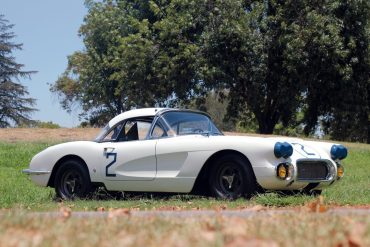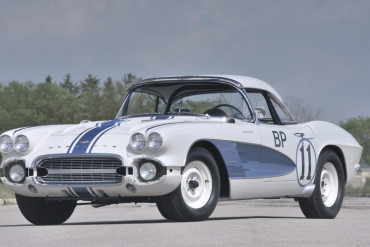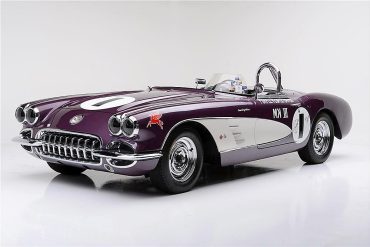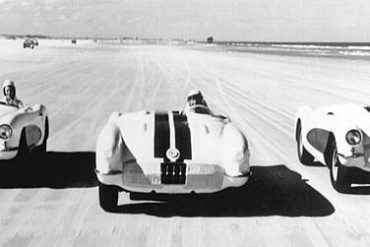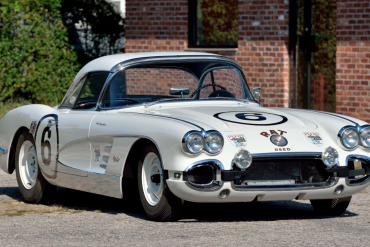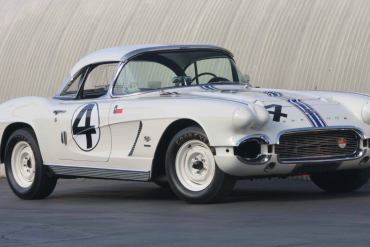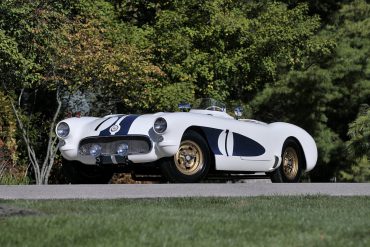The story of the Corvette and how it came to race at Le Mans is one in which the dreams of a number of individuals intersect, over a prolonged period of time. While each of these dreamers came from vastly different backgrounds and held often times very different agendas, they all shared a common vision—an American sports car winning the 24 Hours of Le Mans. For Le Mans, the Sebring #2 car was renumbered as #1.
This 1961 Chevrolet Corvette factory race car possesses a host of rare options and a provenance worthy of the velvet rope treatment at any of the world’s finest auto museums or vintage races. Gulf Oil sponsored and driven to an SCCA B-Production national championship by the likes of Dr. Dick “The Flying Dentist” Thompson and Don Yenko, it stands as one the most successful and important production-based Corvette race cars ever constructed.
The Purple People Eater MKIII is a 1959 Corvette that was literally unbeatable in SCCA B-Production racing in the late 1950s. There were three Purple People Eaters built in 1958 and 1959. The 1959 model, won every race it entered, except the last one, with Jim Jeffords behind the wheel and mechanic Ronnie Kaplan turning wrenches. The car was built by a team at Nickey Chevrolet in Chicago.
Duntov started off with a ‘54 Corvette as his test mule. He knew that accomplishing his goal would require two things: more power and improved aerodynamics. First, he removed the stock windshield and built a small windscreen. A tonneau cover was then added to the passenger side, and a fairing with a long fin was added to the rear deck behind the driver’s head.
Known as the “Race Rat,” this rare 1960 Corvette is one of just 10 produced by the factory with the LPO (Limited Production Option) 1625A 24-gallon fuel tank designed by Zora Arkus-Duntov for racing purposes to reduce the frequency of pit stops. A true factory-prepared race car, this 1960 Chevrolet Corvette Tanker was ordered by gentleman racer and businessman George Reed of “Reed’s Race Rats” fame to compete in 1960 Sebring 12 Hours.
Always on the hunt for greater speed and greater thrills, Delmo decided to replace the '61 he had been racing with a brand-new 1962 Chevy Corvette. Owing to his demonstrated skill behind the wheel and prior successes with Corvettes, Delmo had a close relationship with legendary chief engineer Zora Arkus-Duntov and enlisted his assistance with the new car. "It was easy," Delmo recalls. "I called Zora and said, 'Build me a race car.' The only other thing I said was to make it white."
In 1956, Ed Cole, then General Manager of Chevrolet, decided Corvette could be saved from extinction due to lagging sales by promoting the car as a performance car which could be raced in production classes. The first of these Corvettes was to debut at Daytona Beach for acceleration and top end speed trials, the 12 hour race at Sebring, and also possibly Le Mans.


